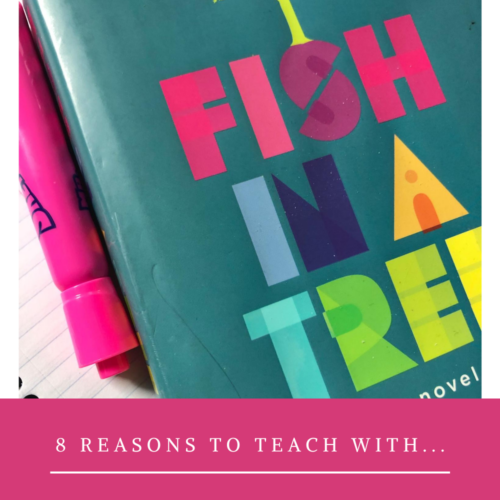
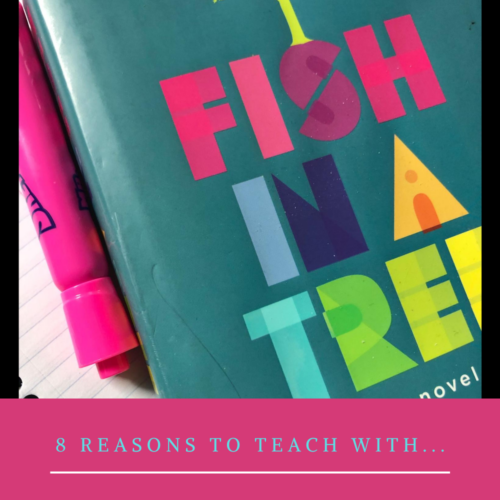
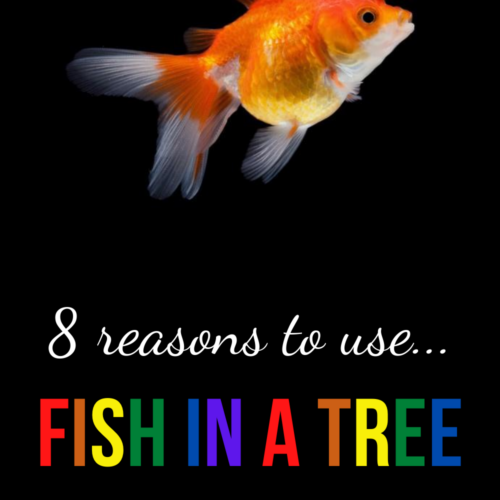
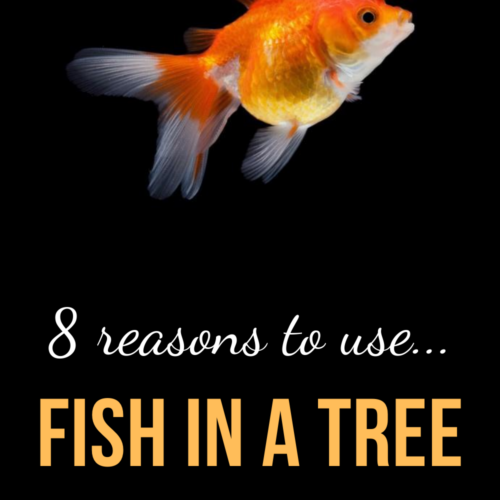

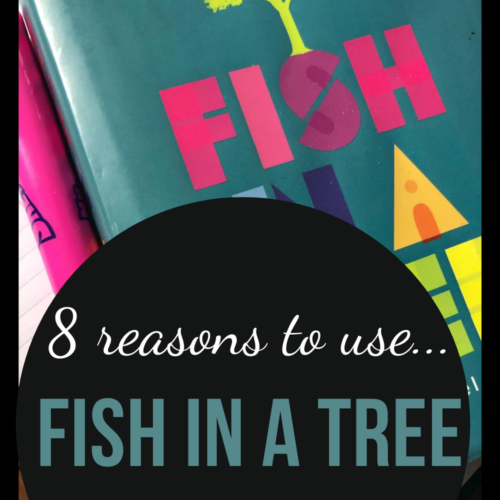
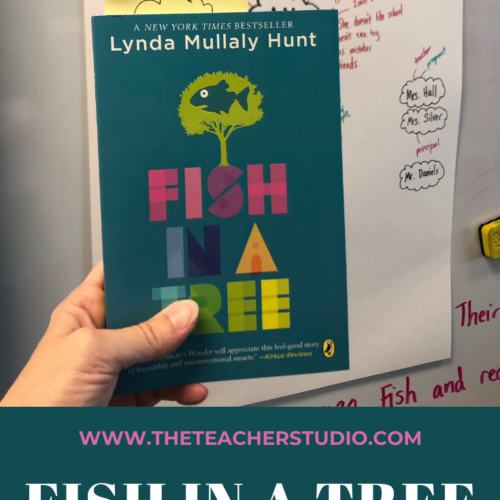
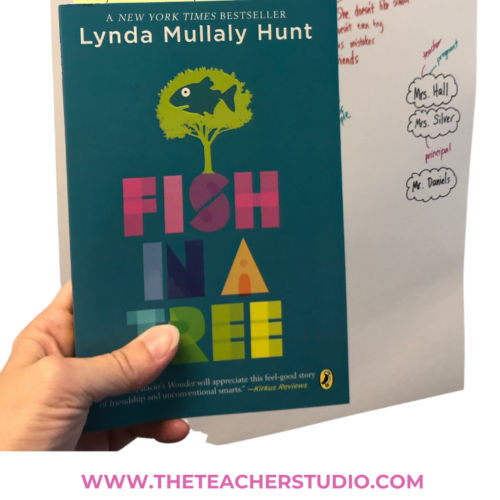
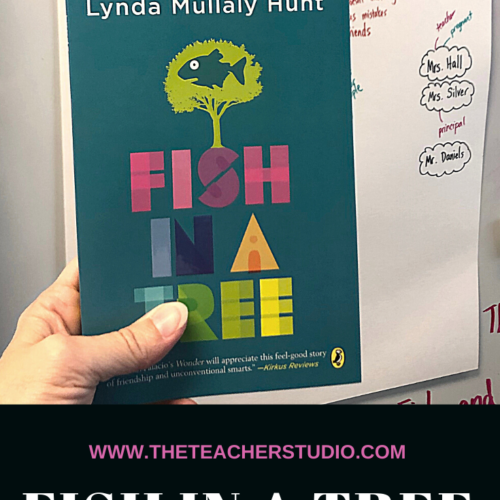
If you aren’t familiar with the book Fish in a Tree by Lynda Mullaly Hunt, I am here to encourage you to CHECK IT OUT! I’ve tried to highlight some of the reasons I use this book every year as a read aloud, mentor text. I hope you find this information helpful!
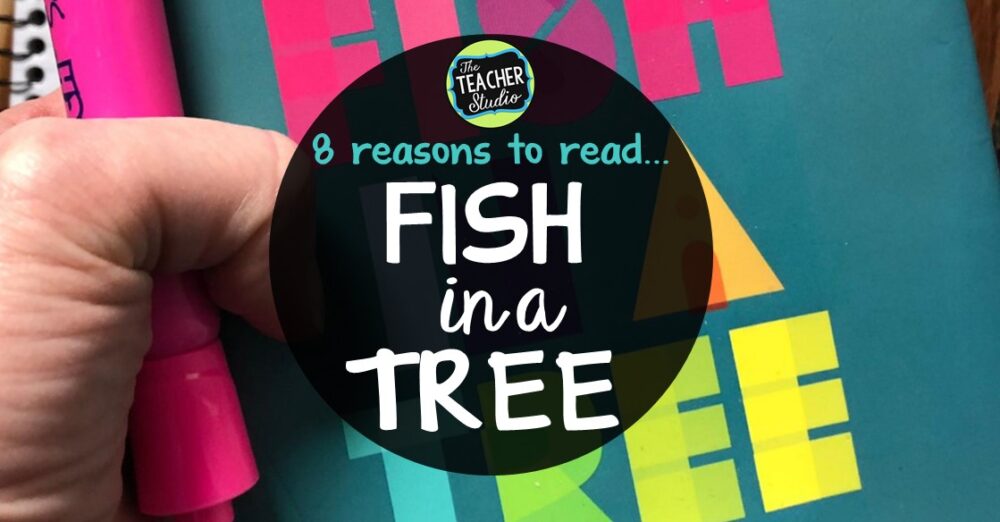
1. A Foundation Text
What I love about Fish in a Tree is that by using it early in the year, I find myself referring to it ALL year. My students do too! We compare characters in other books we read to the characters in this amazing book. We talk about the issues that arise in the book. I’ve had other books that have had this impact on my students, but I haven’t ever had one that “keeps on giving” the way this one does. If you are looking for a book to really anchor your reading instruction–this one is a big win.
I love that students have read alouds as shared experiences, and as a part of a balanced literacy program, we can give students so many quality experiences.
2. Scaffolding for More Complex Texts
One thing that we all know is true is that if we have 24 students in our class, we have 24 reading levels. Pretending that “one text fits all” is simply not reasonable when it comes to independent reading. That’s where the read aloud has its power. By sharing quality read alouds (picture books and novels), we can provide universal experiences with sophisticated texts that are simply unreachable by many of our students.
We want to be able to teach more complicated literary devices, study complex characters, and have high-level discussions. When some students are reading books at a more beginning level, perhaps early chapter books, the characters simply don’t have depth. The storylines are simple. Students for whom these are “just right” books don’t get exposed to the sophisticated text experiences they will need to move to the next level.
Selecting read alouds that can provide these experiences are an excellent scaffold where we can GUIDE students’ thinking. This helps prepare them for the day when they CAN read these books independently! Until then? They reap the benefit of OUR modeling!
3. The Amazing Characters in Fish in a Tree
The characters in Fish in a Tree are so much fun to get to know–both the students and the adults. I love to create a chart starting at the very first chapter where we track students’ thoughts about the characters and how they evolve. Below is an image of our chart partway through the book. We started to draw lines to connect characters that are connected and dotted lines to show characters with conflict. As the book continues, sometimes we need to cross out things, add things, change lines, and so on. The students LOVE it, it is a way to track thinking–and it’s a great activity to have students do with their own books!
The characters in this book are unique. They provide ample opportunity to discuss character traits–positive and negative. We can look at what characters SAY and how they say it. Character actions and reactions are plentiful and provide lots of opportunity for discussion. As we get to know different characters, we can track how we think about them. At first, Ally seems lazy and defiant, but as we get to know her, we understand more. Oliver seems goofy and immature–until we get to know his story.
As the book continues, we can have a discussion about what characters change (dynamic) and which do not (static)–and students love to look for this in their own books as well. This book really has it all in terms of characters, and this is a huge help as we tackle reading standards in the upper grades.
4. Teaching Empathy
As we study the characters in Fish in a Tree, it becomes logical to try to see the story through their eyes. This idea of “empathy” is such an important part of becoming a reader. What did Ally think? How about Shay? What was Mr. Daniel’s perspective? Getting students to think through the eye of each character truly helps deepen their understanding of the text. When it comes to books like this with characters of different backgrounds, learning styles, and traits–helping students recognize how complex characters are is a great way to get them hooked on books AND help them develop their empathy skills.
5. Growth Mindset Discussions
Growth mindset is something that we all try to tackle in our classroom with what we teach and model–and finding examples in the books we read is one way to help make it “real” for our students. Watching the characters navigate difficult situations and modify their mindset–that’s powerful. That’s exactly what happens with Ally–she begins the book with an extremely FIXED mindset, and with the help of her friends, family, and teacher she begins to see things in a new way. What a great discussion to have with our students!
Want to read a little more about growth mindset lessons and ideas? Just click here to see what might inspire you!
6. Teaching about Learning Styles
In Fish in a Tree, we meet students with a vast range of traits, experiences, and learning styles. Ally, the main character, struggles with learning in a traditional way but her teacher sees past it and helps her recognize her strengths. As the book evolves, we see the many strengths that Ally DOES have, and we see that she IS smart…and kind and creative and more. As we get to know Ally, there are countless opportunities to talk about strengths and learning styles and individuality. It’s a great time for students to recognize in themselves their strengths and goal areas and to have conversations about how “different” isn’t a negative–it’s a strength.
7. Multiple Story Lines
When students are first learning to read, they read books that can be read in one sitting. Over time, they begin to read short chapter books and need to learn to maintain the story over multiple sittings. This is a tricky transition for some students. Making the jump to longer chapter books is another milestone, and then–over time–students begin to tackle more sophisticated books. The problem is, some of our students are not naturally able to follow multiple storylines without some explicit instruction. This book is amazing for modeling this. When I point out early in the book that it seems like there are multiple stories, we track them as a class.
We know that the main story involves Ally and her learning “battles” at school. We also know that there is a “Shay story” with how she bullies the school and has her popular crowd following her every move. Albert has HIS own story in the book that we must track. We know that Travis, Ally’s brother, is following his own story too. When we have these conversations with students, it helps them see how writers work and helps them make sense of their own texts.
8. Making Claims and Using Text Evidence
One critical standard that most teachers have to address in the upper grades is something like this:
“Refer to details and examples in a text when explaining what the text says explicitly and when drawing inferences from the text.”
When we ask students to read and discuss more complex texts, it provides tons of opportunities to do just this. We can ask students to reflect on character actions, decisions, and thoughts and to prove their ideas with evidence in the text. We can ask them to make predictions and defend them. There are countless opportunities to get students speaking and writing about important events in texts, but we need rich, quality literature to do this. Fish in a Tree lends itself beautifully to this!
Because this book is one of my favorites and I’ve used it many times, I have created a resource to really help you get the most out of it. Literally thousands of teachers have used it–and they love that it has teaching points ready for them as well as comprehension questions to use AND digital slide access! It’s perfect to help with planning because as you KNOW, we have a lot on our plates! It’s also perfect for when you have a sub because all the key discussion points are right there.
Want a FREE SAMPLE?
Either click HERE or the button below to try a free sample or CLICK HERE to see the preview!
I’ve also been asked for some “after you read” response activities for this book, so I’ve bundled the two together at a discounted price. See what you think! CLICK HERE for the novel study or HERE for the bundle. Just want the “after you read” activities? CHECK THEM OUT!
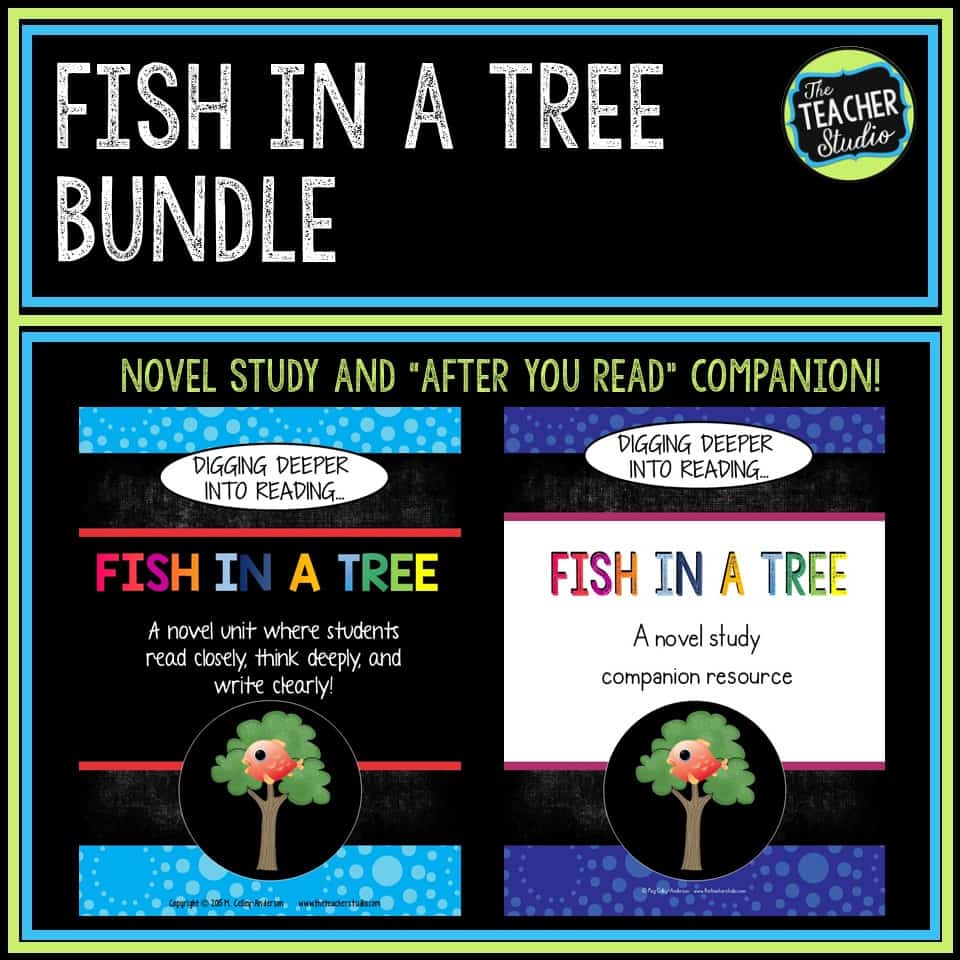
Want to get a copy for yourself? Here is a direct link to Amazon (disclosure: This IS an affiliate link).








